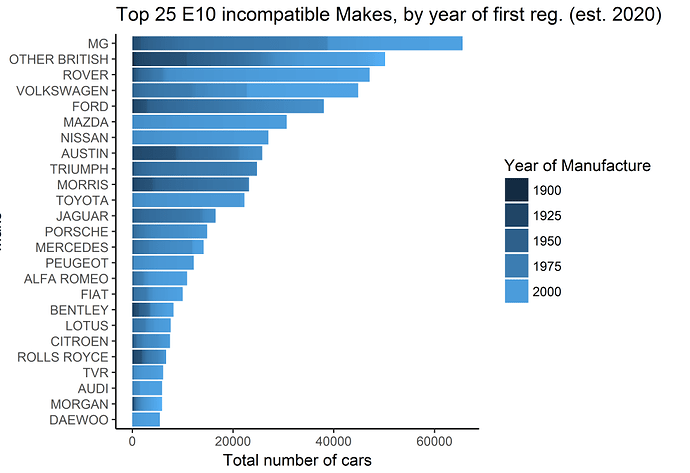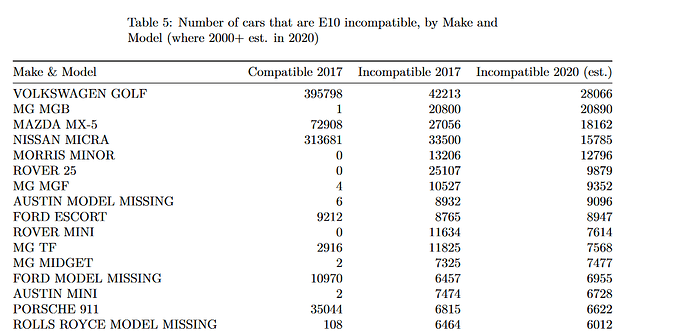In that case, Jaguar cut their own throat by telling the government that E10 is fine in a 30 year old Jag.
The US has been using ethanol-gasoline since 1978. Cars didn’t die.
The question, for this thread, is Mazda interested in owners of older cars? It seems it is not, and the recent NA restoration project was not a true statement of intent. I’m trying to discern whether the statements they have made are accurate, and the result of exhaustive analysis, or whether they are judiciously worded reflecting they exist to sell new cars, not to support old cars.
Its not so much that these fuels will destroy engines (they won’t), but whether the fuel itself will be economically viable to sell at the roadside.
Fuzz Townsend’s comments at the MX5 National were both correct and wrong. His thesis that ICE classic cars will always be around because we still have horses might be correct. But horse ownership now is very expensive (when cars were introduced, horses were dirt cheap, and cars were really expensive, by multiples), but I can still buy hay, apples or whatever a horse eats.
His solution to fuel supply seemed unworkable. He predicted peple will buy petrol from specialist suppliers, and keep it stored at home, pointing out 200 liters of petrol, with council permission, could be stored in a detached garage. Or that farmers will get into the fuel sales business.
Its a matter of perspective whether all of this is fortunate or unfortunate. I spent my early part of my career demonstrating whether the CLAW hypothesis was correct. CLAW (Charlson, (James) Lovelock, Andrae, Andy Watson) proposed a climate feedback loop (how diatoms in ocean, proliferating during periods of warming, can effect local cooling, by promoting cloud albedo). In this case, the marine sulfur cycle. My discovery was of a novel group of bacteria that could close the loop and ensure the cycle was a cycle, and we are screwed if that cycle was disrupted (this played into Lovelock’s idea of Gaiea, or the living planet, a useful metaphor about how the mineral cycles were much like the homeostasis processes that keep every cell alive. Break the cycles, and you kill the cell).
Exhaust emissions, per se, are not the issue, but where those emissions came from. The burning of oil, dinojuice, hugely imbalances the carbon budget. A more biological component will mitigate that (biological will never totally mitigate, because you can’t get to the crop yields needed without a bit of oil-derived fertilizer). Unfortunately, in my view, Genetic Luddites, slowed the development of some high yield crops.
And its not about “saving the planet”. The planet will be ok, we won’t. The rhetorical question shouldn’t be “how long before all vehcile drivers will be forced to go electric (or other alternative power system)” but should be “how long before all vehcile drivers will want to go electric (or other alternative power system)”. Probably not far from that, and right now, I suspect the vast majority of drivers, if given the opportunity, would “go electric”. But cost is a barrier, as well as technical uncertainties.
But its not just fuel that is necessary to keep that car on the road. For an older car, it pretty much is, but for cars built after 1991, there are other things needed to keep the car legal. Emissions control equipment (catalytic converters); what happens when the catalytic converter manufacturers change their business (or go out of business? Cars still need to meet regulation, and those requirements become stiffer, in general, the newer the car. And then the mechanical skills needed to maintain such cars; when will they disappear from the workforce? In general, the newer the car, the more necessary it is to be able to access diagnostic instrumentation.




